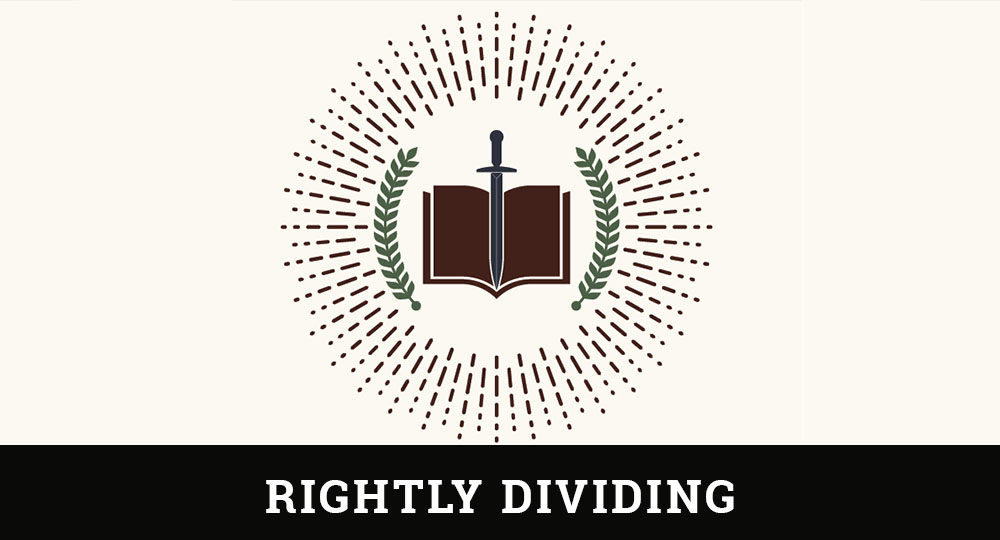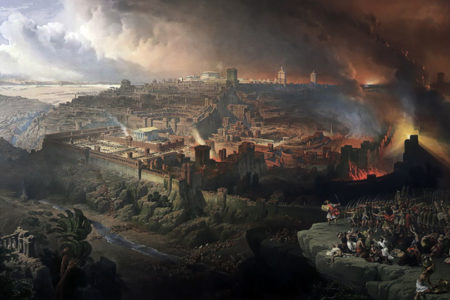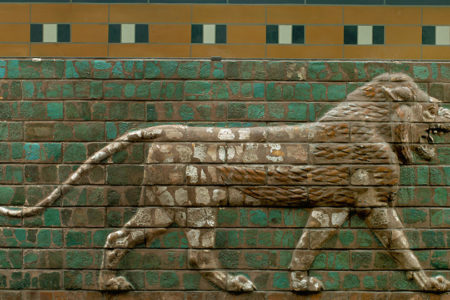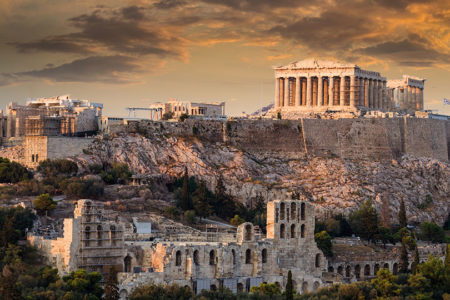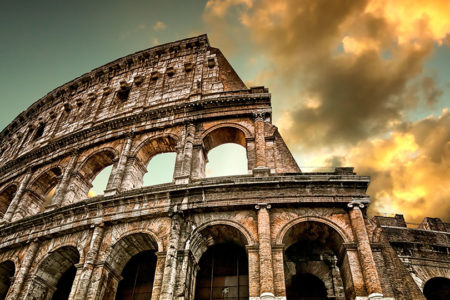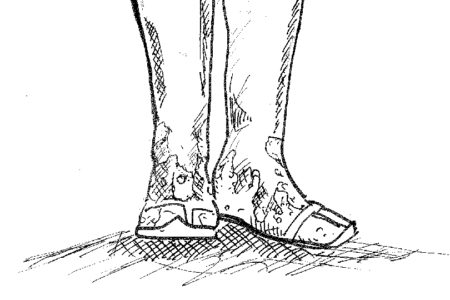The Glorified Christ Revelation 1:9–20
What did Jesus look like in the flesh? Artists have tried to paint Him and authors have tried to describe Him. Nowhere does Scripture relate the physical appearance of Jesus during His earthly life. Isaiah wrote, “he hath no form nor comeliness, and when we shall see him, there is no beauty that we should desire him” (Isa. 53:2); that is, there was nothing in Jesus’ human appearance to attract people to Him or make them think He was extraordinary. But Scripture does provide an awe-inspiring portrait of the glorified Christ, which John received through a vision while in captivity on the island of Patmos.
Patmos Captivity
John began by identifying with his readers and describing the setting in which he received the vision of Jesus Christ. He was a fellow believer with all those “in the kingdom” of God (v. 9). All who believe in Christ are part of God’s spiritual kingdom and make up a kingdom of priests” (v. 6). As brothers and sisters in Him, all believers who live godly in Christ will become “companion[s] in tribulation” (v. 9) for their faith in the Lord. John was no different. He had been banished to the “isle … called Patmos” (v. 9) as a religious-political prisoner by Emperor Domitian in AD 95. Patmos is a small, isolated, volcanic island, only ten miles long and six miles wide, located in the Aegean Sea. The aged apostle was made to perform hard labor in the mines on Patmos. However, he was released by Emperor Nerva 18 months later.
John was sustained during this trying time through the “patience of Jesus Christ” (v. 9). Christ provided the needed strength for the apostle to endure this extreme trial and come through it victoriously. John was exiled to Patmos for faithfully preaching and teaching “the word of God” and for the “testimony” he manifested for “Jesus Christ” (v. 9).
Jesus predicted that those in His kingdom would suffer tribulation (Mk. 10:30; cf. Acts 14:22), but tribulations need not impede our walk with Christ. Often believers are brought into a closer relationship with the Lord during such times. John, like Peter and Paul, received his greatest revelation during a time of extreme suffering for the gospel of Christ.
John received his vision while, “in the Spirit on the Lord’s day” (v. 10). This is the first of four visions John received while “in the spirit” (1:10; 4:2; 17:3; 21:10). Being in the Spirit is often used of a prophet or an apostle under the control of the Holy Spirit and put in a trance or trance-like state during the time he received a vision.
The phrase “on the Lord’s day” has been interpreted two ways. Some hold that it refers to Sunday, the day on which Christians worship. Although Christians call Sunday “the Lord’s day,” it is not so used in Scripture. The phrase did not come into use until after the first century. True, Paul used “Lord” as an adjective in reference to “the Lord’s supper” (1 Cor. 11:20), but this is not sufficient evidence to confirm that John was speaking of Sunday. Others interpret “the Lord’s day” to mean “the day of the Lord,” a time of judgment revealed to John. In support of this view, one author writes, “It is rather a reference to the day of the Lord of the Old Testament, an extended period of time in which God deals in judgment and sovereign rule over the earth. The adjective form can be explained on the ground that in the Old Testament there was no adjective form for ‘Lord,’ and therefore the noun had to be used. The New Testament term is therefore the equivalent to the Old Testament expression ‘the day of the Lord.’”*
Thus, John recorded what he saw and heard about the future “day of the Lord.” Opponents of this view point out that the vision does not mention “the day of the Lord,” referring to the end of the age and Christ’s Second Coming. Rather, it focuses on Christ’s message to seven local churches in Asia Minor during the first century, not “the day of the Lord.”* Scholars are equally divided on the correct interpretation.
Portrait of Christ
In this exalted state, John “heard behind [him] a great voice, as of a trumpet” (v. 10). The voice belonged to Christ, who identified Himself as “Alpha and Omega, the first and the last” (v. 11) (already explained in a previous article, see v. 8).
The Lord commanded the apostle, “What thou seest, write in a book, and send it unto the seven churches which are in Asia” (v. 11). This is the first of twelve times John was commanded to record what he saw.
Hearing the voice from behind, John turned quickly “to see the voice” (v. 12). He “saw seven golden lampstands, And in the midst of the seven lampstands one like the Son of man” (vv. 12–13). We are not told how these stands were shaped or what they looked like. Most likely they had one branch arranged in a circular configuration with Christ standing in the center. The term Son of Man is used often in the Gospels as a reference to Christ’s humanity. The glorified Christ still has a human form with identifying marks from His crucifixion.
John went on to record a sevenfold description of Christ’s appearance, apparel, and authority.
First, “His head and his hair were white like wool, as white as snow” (v. 14). A hoary head was worthy of honor and conveyed the idea of wisdom and dignity. The whiteness was most likely due to the brightness of His heavenly glory. This image corresponds to Daniel’s vision of God, when he saw “the Ancient of days,” whose hair was white “like pure wool” (Dan. 7:9). White hair in Scripture is symbolic of purity in character, dignity of age, authority as a judge, and eternalness. Daniel’s statement regarding the Ancient of days can also be applied to Christ.
Second, Christ’s face was brilliant: “His countenance was as the sun shineth in its strength” (v. 16). John’s look at the glorified Lord was blinding, a reminder of Christ’s transfiguration when “his face did shine like the sun, and his raiment was as white as the light” (Mt. 17:2).
Third, “his eyes were like a flame of fire” (v. 14), indicating a penetrating gaze that flashed with intelligence, righteousness, and the look of divine wrath upon the wicked.
Fourth, the Lord’s feet were “like fine bronze, as if they burned in a furnace” (v. 15). The meaning of “fine bronze” (chalkolibanon) is somewhat uncertain. It could be speaking of an alloy of gold and silver mixed with pure brass. His feet appeared as shining bronze fired to white heat, as in a kiln. This is symbolic of Christ’s strength and stability as He treads the wicked in judgment, ultimately making His enemies His footstool (Heb. 10:13).
Fifth, He was “clothed with a garment down to the foot, and girded about the breasts with a golden girdle” (v. 13). The priests of the Old Testament wore long flowing robes for glory and beauty (Ex. 28:2, 4), a symbol of dignity, majesty, and divine authority. This is a reminder of Christ’s glory, beauty, divine authority, and high priestly ministry.
Sixth, the sound of “his voice [was] like the sound of many waters” (v. 15), symbolic of God’s authority, power, and majesty. Those who have experienced the awesome sound and power of rushing water, the ocean, or the great falls at Niagara can relate to John’s description.
Seventh, His speech was powerful: “out of his mouth went a sharp two-edged sword” (v. 16). This is a description of a Thracian sword—long, broad, heavy, and sharp on both edges. The sword is mentioned six times throughout the book (1:16; 2:12, 16; 6:8; 19:15, 21), referring to Christ’s word of divine judgment.
In “his right hand” Christ held “seven stars” (v. 16). “The seven stars are the angels of the seven churches” (v. 20), whereas the “seven lampstands … are the seven churches” (v. 20). This is called a “mystery” (v. 20), or a previously hidden truth in Scripture now divinely revealed. The word angel means messenger and can refer to either an angelic being or a human being. Some conservative scholars hold that these are angelic beings for the following reasons. First, throughout the Book of the Revelation the Lord works through angels. Second, the New Testament use of angels indicates that these are angelic beings. Third, the angels are given responsibilities in the seven churches that surpass the abilities of human beings. Fourth, human leadership within these churches had not progressed to a stage where a single person was in charge.*
Others hold that these messengers are not angelic beings, but leaders or pastors, responsible for the spiritual welfare of the seven churches to whom Christ directed His message. These men were in the right hand of Christ, indicating His possession, power, and protection over them. Scholars are divided on the correct identification of these beings. The second position seems to carry more weight, in light of what is recorded in the next two chapters.
John recorded the impact that the glorified Christ had upon him: “And when I saw him, I fell at his feet as dead” (v. 17). He was stunned with fear and fell to the ground. Who would not be overwhelmed with a sense of awe and fear by seeing a vision of the glorified Christ? Immediately the Lord laid His “right hand” of authority and power on John’s trembling figure as He spoke, “Fear not” (v. 17)—words of assurance and comfort.
The glorified Christ identified Himself in five ways as the eternal Savior, First, “I am the first and the last” (v. 17). He is creator and consummator, absolute Lord of all history. Second, “I am he that liveth” (v. 18). He is the resurrected Lord who eternally exists. Third, “I … was dead” (v. 18). He is the crucified Son of God who provided salvation for men. Fourth, “I am alive for evermore” (v. 18), expressing His eternal existence as God. Fifth, He controls the destiny of the departed dead, having “the keys of hades and of death” (v. 18). Christ has the right to possess the keys because He conquered death.
Purpose of Communication
The apostle was brought back to reality with a command from the Lord to write. In verse 19 Christ revealed a divine outline of the Book of the Revelation. First, John was to record the past: “the things which thou hast seen,” or the vision of Christ that he had just experienced. Second, he was to record the present: “the things which are,” or a description of the seven churches in Asia Minor (Rev. 2–3). Third, he was to record a prophecy of the future: “the things which shall be hereafter,” or events revealed by Christ after His message to the seven churches (Rev. 4–22). Herein lies an important key to unlocking the order and content of future events throughout the Book of the Revelation.
Today’s church needs a fresh glimpse of the glorified Christ seated at the right hand of God in all of His splendor and majesty. Like John, as finite beings we must fall at His feet with a sense of awe and fear as we gaze on the majesty of our infinite Lord. Those who do will come away with a renewed sense of the fleshly and self-serving nature of their worship and service to Christ. Remember, the living Christ walks in the midst of the church today weighing its worship and service. This should cause each of us to walk circumspectly before our omniscient Lord. Hopefully our service will be found acceptable in His sight.
